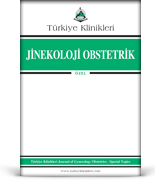Çoğul gebeliklerin görülme sıklığı son yıllarda artmıştır. Çoğul gebelik, dünya çapında doğumların %1-3'ünü etkiler. Çoğul gebelikte gözlenen artış çoğunlukla iki etiyolojiye atfedilebilir: 1) çoklu gebelik riskinin artmasıyla ilişkili olan yardımcı üreme teknolojilerinin kullanımının artması ve 2) yaşamın ilerleyen dönemlerinde çocuk sahibi olmaya doğru kayma veya üreme zamanının gecikmesidir.
Çoğul gebelikler hem anne hem de bebekler için daha yüksek risklerle ilişkilidir. Çoğul gebelik yaşayan kadınlarda düşük, anemi, hipertansif bozukluklar, erken doğum, kanama ve doğum sonrası morbidite riski daha yüksektir. Bu gebeliklerde operatif doğum olasılığı, perinatal mortalite ve morbidite oranları da daha yüksektir. Çoğul gebelikler tekil gebeliklerle karşılaştırıldığında yaşanan önemli sorunlardan bazıları; artmış preterm doğumlar, kısa serviks varlığı, prematürite, fetüslerde gelişme geriliği saptanması, TTS, TAPS, TRAP varlığı, artmış fetal ölüm oranları, fetüslerden birinin intrauterin ölümü, fetal redüksiyon ve geç intervalli doğumlarda yaşanan olumsuz durumlardır. Bu sorunların ve komplikasyonların yönetimlerinden bazılarında fikir birliği olmakla birlikte bazılarının yönetimi hâlen tartışmalı konular arasındadır.
Bu kitap; giderek yaygınlaşan ve artan maternal ve perinatal mortalite ve morbidite ile ilişkilendirilen çoğul gebeliklerin yönetimi hakkında kapsamlı bir güncelleme sunmaktadır.
Bu kitabın temel hedefleri şunlardır:
Bu kadınların bakımında görev alan sağlık çalışanlarının bilgi düzeyini artırmak;
En son ulusal ve uluslararası kılavuzların önerileri doğrultusunda bilgilerini güncellemek; ve
Çoğul gebelikli kadınların yönetiminde multidisipliner bir yaklaşımı teşvik etmek.
Her bölüm, okuyucuya konuyla ilgili çeşitli önemli konuları sunmaktadır. Kitap, epidemiyoloji, etiyoloji, tanı, doğum öncesi bakım, monokoryonik gebeliklerde görülen özel komplikasyonlar, erken doğum ve doğum şekli gibi çoğul gebeliğin tüm yönlerini kapsamaktadır. Dokuz bölümden oluşan kitap, çoğul gebeliğin en önemli yönlerini ele almaktadır. Ülkemizin dört bir yanından yazarlar, literatür eşliğinde güncel veriler ve deneyimlerinden yararlanarak bu kitaba katkıda bulunmuştur. Kitap, okuyucuya çoğul gebelik konusunda en son gelişmeleri sunmaktadır.
Çoğul gebeliklerin yönetiminin temel taşı olan bu kitap, kadın doğum uzmanlarına, perinatoloji uzmanlarına, kadın doğum asistanlarına, aile hekimlerine ve ebelere hitap edecek ve anneler ve bebekler için sonuçları iyileştirecektir.
Kitabın hazırlanmasında değerli bilgi ve deneyimlerini aktararak katkı sağlan bölüm yazarlarına ve bu fırsatı veren, her aşamada desteklerini esirgemeyen Türkiye Klinikleri'ne teşekkür ederim.
Prof. Dr. Hanım Güler ŞAHİN
Editör
Van Yüzüncü Yıl Üniversitesi Tıp Fakültesi, Perinatoloji BD, Van, Türkiye
The incidence of multiple pregnancies has increased in recent years. Multiple pregnancy affects 1-3% of births worldwide. The observed increase in multiple pregnancy is mostly attributable to two etiologies: 1) increased use of assisted reproductive technology, which is associated with increased risk for multiples, and 2) shift toward childbearing later in life or delayed reproductive timing.
Multiple pregnancies are associated with higher risks for both mother and babies. Women with multiple pregnancies have an increased risk of miscarriage, anemia, hypertensive disorders, hemorrhage, and postnatal illness. These pregnancies are more likely to need an operative delivery, and perinatal mortality and morbidity rates are also higher in these pregnancies. Compared to singleton pregnancies, multiple pregnancies are associated with more problems. Some of these problems include increased preterm births, the presence of a short cervix, prematurity, fetal growth restriction, the presence of TTS, TAPS, and TRAP, increased rates of fetal death, intrauterine death of one fetus, complications of fetal reduction and late interval deliveries. While there is consensus on the management of some of these problems and complications, the management of others remains controversial.
The aim is to provide a comprehensive, up to date and an evidenced-based discussion of multiple pregnancy and recent advances in its management.
The main objectives of the book are:
To increase the level of knowledge of healthcare professionals involved in the care of these women;
To update their knowledge in keeping with the recommendations of the latest national and international guidelines; and
To promote a multidisciplinary approach to the management of women with multiple pregnancy.
Each chapter presents the reader with various important issues related to the subject matter. The book covers all spectrums of multiple pregnancy such as epidemiology, etiology, diagnosis, prenatal care, unique complications in monochorionic pregnancies, preterm birth and mode of delivery. Through its 9 chapters the book contemplates the most relevant aspects of multiple pregnancy. Authors from all over Türkiye have contributed to this book, by using current data in the literature and their experiences. The book gives the reader a state-of-theart update of multiple pregnancy.
This book is the cornerstone of the management of multiple pregnancies and will therefore appeal to obstetricians, maternal-fetal physicians, obstetric assistants, family physicians and midwives, improving outcomes for mothers and babies.
I would like to thank the chapter authors who contributed to the preparation of this book by sharing their valuable knowledge and experience and to Türkiye Klinikleri for providing the opportunity and their unwavering support at every stage.
Prof. Dr. Hanım Güler ŞAHİN
Editor
Van Yüzüncü Yıl University Faculty of Medicine, Department of Perinatology, Van, Türkiye







.: Process List